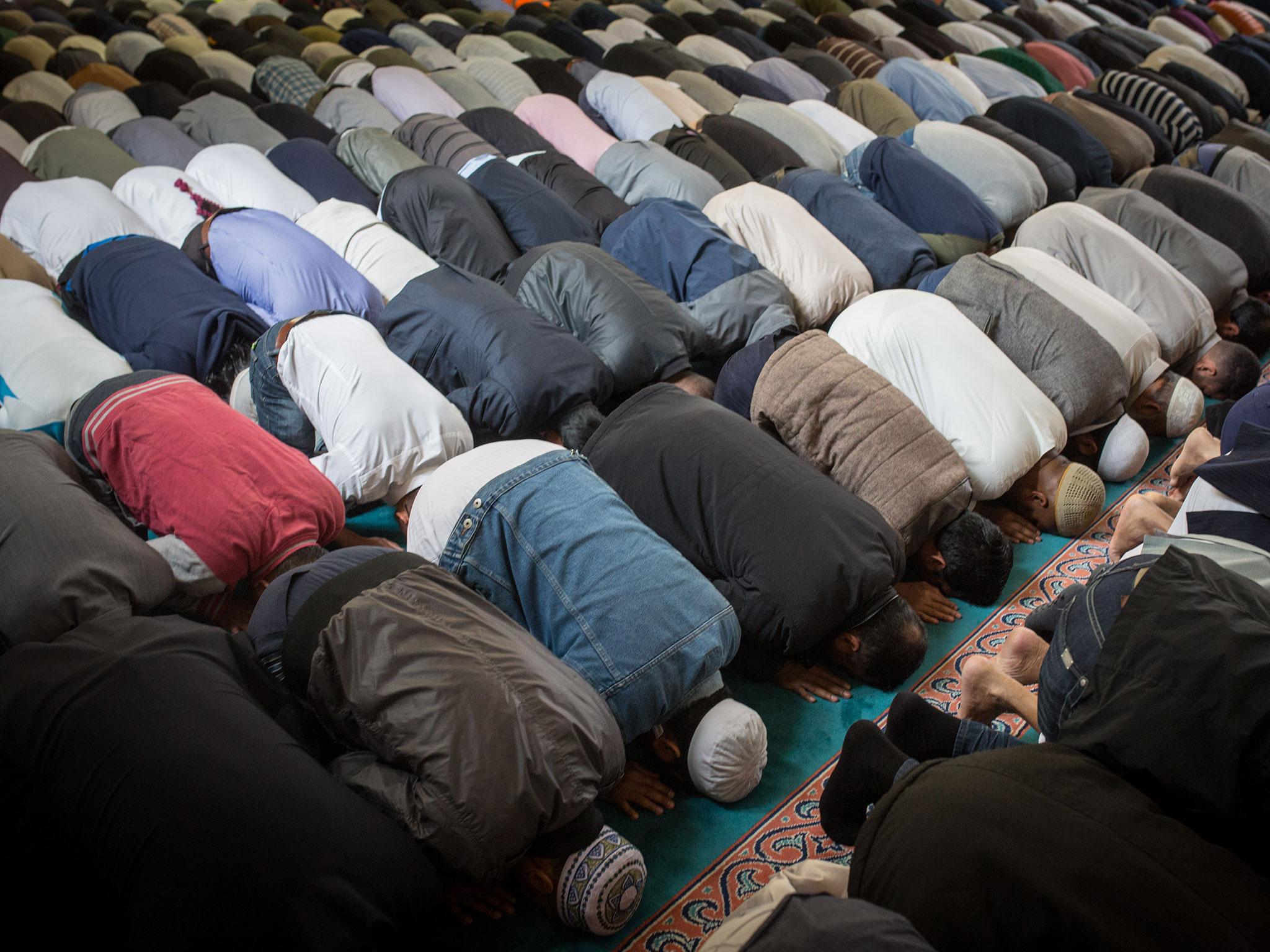Europe's Muslim population projected to increase by 50m by 2050 in 'high migration' scenario
Even if all immigration stops numbers will continue to grow over next few decades, Pew Research Centre says

Your support helps us to tell the story
From reproductive rights to climate change to Big Tech, The Independent is on the ground when the story is developing. Whether it's investigating the financials of Elon Musk's pro-Trump PAC or producing our latest documentary, 'The A Word', which shines a light on the American women fighting for reproductive rights, we know how important it is to parse out the facts from the messaging.
At such a critical moment in US history, we need reporters on the ground. Your donation allows us to keep sending journalists to speak to both sides of the story.
The Independent is trusted by Americans across the entire political spectrum. And unlike many other quality news outlets, we choose not to lock Americans out of our reporting and analysis with paywalls. We believe quality journalism should be available to everyone, paid for by those who can afford it.
Your support makes all the difference.The Muslim population in some European countries could triple as a percentage by 2050, research suggests.
Even if all immigration to the continent stops, Europe’s Muslim population will continue to grow over the next few decades, a Pew Research Centre report found.
Using a mid-2016 estimate of 25.8 million Muslims as a baseline, the report modelled three scenarios for estimating the number of Muslims who would be living in Europe by 2050.
Each scenario assumed different future migration rates.
Under the “zero migration” scenario, an estimated 30 million Muslims would make up 7.4 per cent of Europe’s population by 2050, compared to the 4.9 per cent they comprised last year, the report projected.
The researchers said it is mostly because Muslims are on average 13 years younger than other Europeans and also have a higher birthrate.
The study estimates 58.8 million Muslims would account for 11.2 per cent of the population in a “medium migration” scenario which has migration maintaining a “regular speed”, defined by the Pew researchers as migration motivated by economic, educational and family reasons, but not for seeking asylum as a refugee.
In the “high migration” scenario, the study projects the record flow of migrants who came to Europe between 2015 and 2016 would continue indefinitely, resulting in 75 million Muslims in Europe by the middle of the century.
Even with the most immigration, Muslims as a group would “still be considerably smaller than the populations of both Christians and people with no religion in Europe,” the researchers concluded.
Migration has been a politically sensitive topic in Europe following the influx of newcomers, including refugees, in 2015 and 2016.
Some countries have seen backlashes including populist parties campaigning on anti-Islam messages.
The study was based on census and survey data, population registers, immigration data and other sources. The 30 countries it covered include the 28 European Union members, plus Norway and Switzerland.
Not all countries would be affected evenly by future immigration, according to the Pew report.
In the high migration scenario, Germany and Sweden would have the biggest increases because both countries took in the most asylum-seekers during the height of the refugee crisis two years ago.
While Muslims made up 6 per cent of Germany’s population last year, their proportion would go up to 20 per cent by 2050.
Sweden’s Muslims, who were at 8 per cent in 2016, would account for 31 per cent of the population in that same scenario.
Meanwhile, some countries that had comparatively few Muslim residents in 2016 would continue to have few by 2050 in all three scenarios.
This article's headline has been updated.
Join our commenting forum
Join thought-provoking conversations, follow other Independent readers and see their replies
Comments